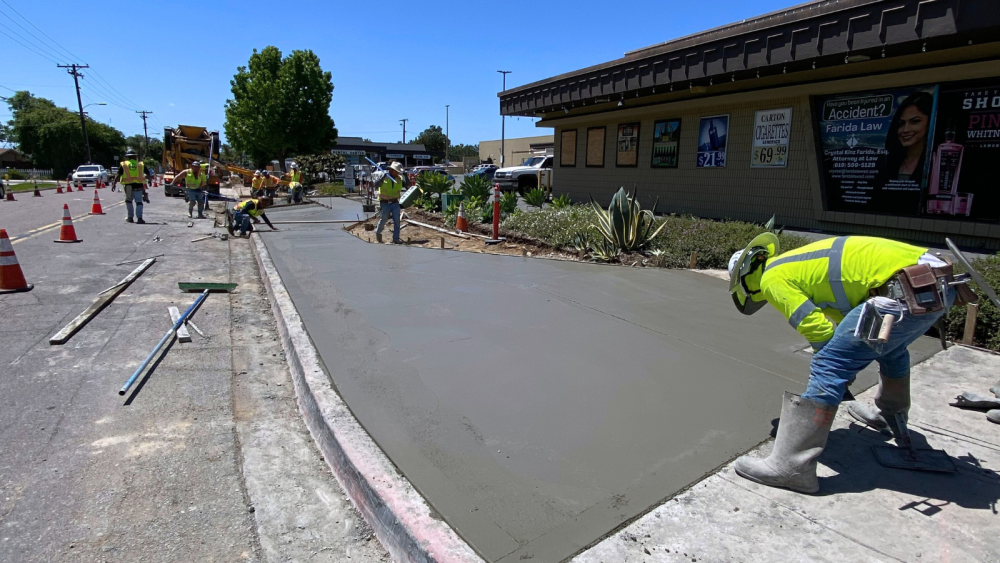New Milestone Reached on Sidewalk Replacement

With a goal of making neighborhoods more safe and walkable for San Diegans, this month the City of San Diego will set a record by completing the highest number of sidewalk replacements in a single fiscal year. The City is on track to complete more than 1,200 locations by the end of fiscal year 2025, which ends June 30, nearly tripling the previous record of 436 locations in fiscal year 2021.
Sidewalk replacement and repair are part of the City’s commitment to improving neighborhood infrastructure and public safety, and the investment can help protect the City from costly “trip and fall” lawsuits.
“Sidewalks connect communities and smooth, level sidewalks are important for San Diegans to be able to move through their neighborhoods safely,” said Bethany Bezak, Director of the City’s Transportation Department. “Our teams continue to focus on replacing sidewalks across the city, and we are pleased to be able to replace so many locations in this current fiscal year.”
With 4,500 miles of sidewalks, many of which were built during the rapid construction of the City’s roadway system from the start of World War II through the 1970s, the sidewalk system also includes much older sidewalks, with some dating to the early part of the last century. The typical useful life of a sidewalk is 50 to 70 years, depending on site conditions.
This FY25 milestone was made possible by strategic planning and close coordination between the Transportation Department’s Sidewalk Team, Urban Forestry staff, and strong partnerships with the Engineering and Capital Projects Department.
“We are proud to be a contributor to this major accomplishment in repairing and replacing damaged and inaccessible sidewalks across San Diego,” said City Engineer Rania Amen, Director of the Engineering and Capital Projects Department. “These improvements are critical to providing a safe space for everyone to get around, and our team is dedicated to continuing these efforts in the years to come.”
In addition to sidewalk replacement, the City also repairs sidewalks through asphalt ramping and sidewalk slicing. City teams are able to quickly address asphalt ramping needs at sidewalk locations which involves applying a patch of asphalt to an uplifted sidewalk to create a gradual ramp, and sidewalk slicing involves cutting sidewalk uplifts to create a smooth sidewalk transition. Sidewalk ramping typically takes place in five days or less and thousands of these repairs are completed annually.
The City’s Transportation Department is responsible for maintaining sidewalks fronting City-owned property and to repair damage caused by heat expansion, City utility work, ground settling and trees within the public right of way.
Meanwhile, normal sidewalk wear and tear, along with damage caused by private trees or age damage to sidewalks, are the responsibility of private property owners, who can take advantage of the City's Safe Sidewalks Program to help offset the cost of repairs.
The Safe Sidewalks program streamlined the permitting process and eliminated $2100 in permitting fees for homeowners when repairs are needed. The City allocated $300,000 to cover the costs of sidewalk repair projects in historically under-resourced communities, also known as Structurally Excluded Communities, as defined in Council Policy 800-14.
The Transportation Department’s in-house sidewalk repair and replacement team has completed repairs at 56 sidewalk locations for property owners in these areas, up from 30 locations last fiscal year.
Learn more about the Safe Sidewalks Program by visiting sandiego.gov/safesidewalks.
